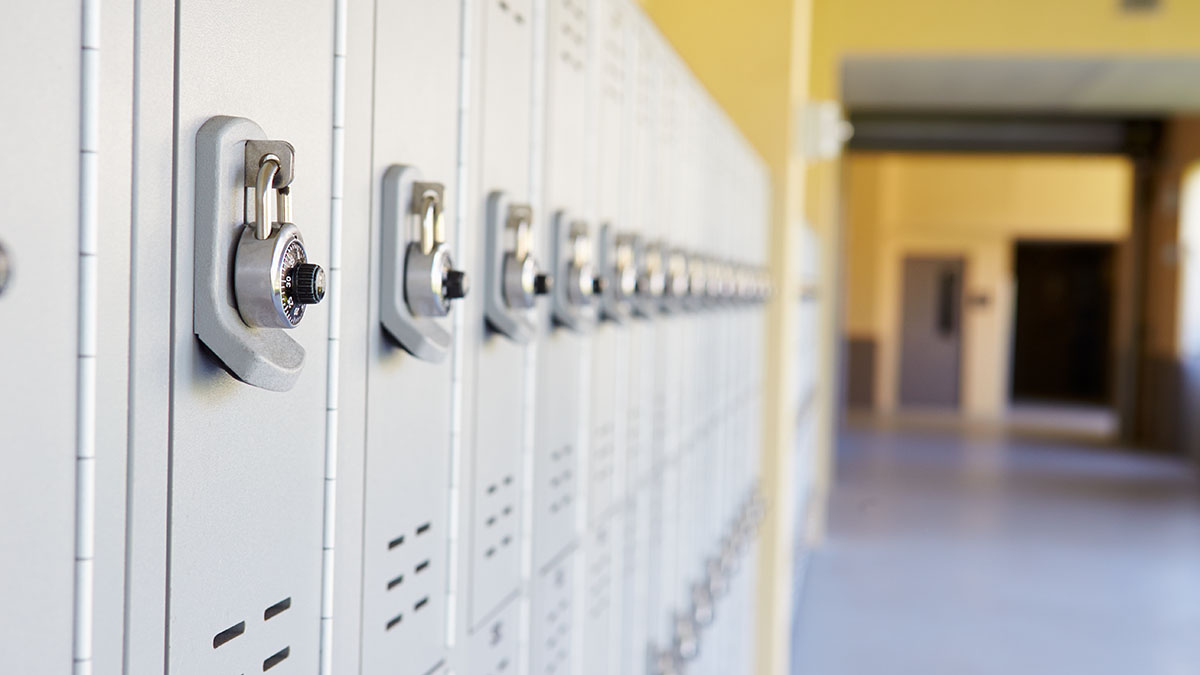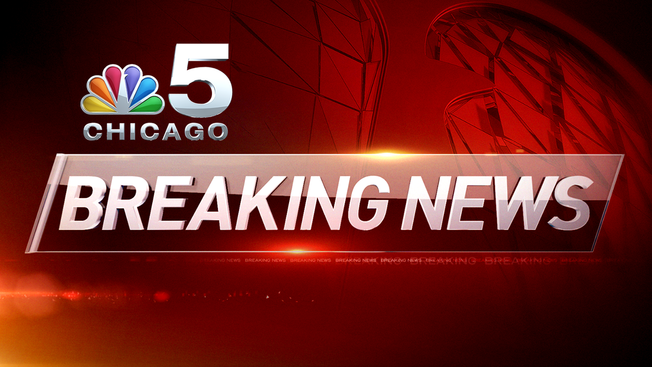Despite the fact that lawmakers passed Illinois' first budget in more than two years earlier this month, there's still a chance that public schools across the state may not be able to open on time this fall.
That's because the appropriations portion of the budget contains a provision that makes state aid for K-12 schools contingent on changing the education funding formula to an "evidence-based model" – akin to a bill passed in May that Gov. Bruce Rauner has vowed to veto.
Illinois currently employs a "foundation level" approach to school funding, which assumes a baseline annual cost of educating a student, reached through a combination of state and local resources.
That number statewide is set at $6,119 per pupil – a figure that has not changed since the 2009-2010 school year, and has fallen more than $2000 short of the Illinois Education Funding Advisory Board’s recommendation each year since.
The gap between the EFAB's suggested foundation level and actual appropriations has grown progressively larger, with the board most recently recommending a foundation level of $9,204 per student for fiscal year 2018.
Adding to the financial pressure, Illinois has also been prorating payments to school districts each year by an average of 10 percent since appropriations first fell short in 2012.
In total, the EFAB recommended that in order to adequately fund public schools this year, the state would need an additional $4.6 billion – nearly doubling the $5.07 billion appropriated in general state aid for fiscal year 2017.
Local
In addition to being underfunded, Illinois' education funding system has been found to be among the least equitable in the country.
The Education Law Center gave Illinois an 'F' grade when it comes to funding distribution, finding in its January report that Illinois is one of 21 states that has a regressive system, meaning it provides less aid to districts that have a higher concentration of low-income students.
Illinois ranks dead last in the country when it comes to funding its highest poverty school districts, according to a study by the Education Trust.
For each dollar spent educating a non-low income student in Illinois, the study found that just 81 cents is spent on that of a low-income child – the largest gap in the nation. [[432983263, C]]
Experts say the root of this inequity can be traced to an overreliance on local sources (largely property taxes) to fund school districts.
According to the US Census Bureau, Illinois contributes just 37.8 percent of total school funding across the state, tying with Texas for the fifth lowest proportion in the country.
In comparison, 55 percent of education funding in Illinois comes from local revenue, which is strongly associated with district wealth and inversely correlated to student poverty.
Simply put, poorer school districts can't supplement limited state aid in the way wealthier communities can – a disparity that led Chicago Public Schools to file a lawsuit earlier this year alleging that Illinois' funding system violates students' civil rights.
In 2016, Rauner created the Illinois School Funding Reform Commission in an effort to find a new formula. In February, the 25-member commission released its final report, which was used to craft Senate Bill 1 to move Illinois to an evidence-based model of education funding.
An evidence-based model is a system that distributes state aid based on the level of funding each individual school district needs to provide students with a quality education.
That number, called an "adequacy target," is calculated on a district-by-district basis by examining the per-pupil cost of programming that research has proven to be effective in improving academic performance – like small class sizes, tutoring, full-day kindergarten, after school programs, guidance counselors and more.
Each district's adequacy target is adjusted to account for differences in regional operating costs as well as student demographics, acknowledging that it costs more to educate English learners, children with special needs, low-income students, etc.
An evidence-based model would then calculate how much each district can contribute from property taxes (known as the "local capacity target"), plus its current state funding levels (as SB 1 contains a "hold harmless" provision that guarantees no school will receive less state aid under the new model than it currently does).
That total number is compared to the district's adequacy target to determine how well-funded it is.
Based on how close they are to their adequacy target, districts are placed into one of four tiers, a ranking system that dictates how new state funds for education are disbursed, with priority given to the districts that are further from being fully-funded.
Under SB 1, 40 percent of any new state funding would go to the poorest schools in Tier 1, and 59 percent to Tier 2, which encompasses all districts funded at less than 90 percent of their adequacy target, including those in Tier 1. Tier 3 districts, those between 90 and 100 percent funded to adequacy levels, would receive 0.9 percent of appropriations, while the remaining 0.1 percent would be sent to schools in Tier 4 that are at 100 percent or more of their target.
SB 1 would also eliminate the Chicago Block Grant, which has automatically dedicated a portion of funding to CPS each year since its creation in 1995. Under the new model, CPS would have to submit reimbursement claims to receive state aid like other districts across the state.
Illinois' largest school district (serving nearly 20 percent of the state's children) is also the only district entirely responsible for paying the employer contribution to its Chicago teacher pension fund, while the state pays both the normal cost and unfunded liabilities associated with teacher pensions for every other district.
SB 1 looks to address that disparity, making changes that are at the heart of the impending battle between Rauner and Democratic lawmakers.
Under SB 1's structure, both the block grant and CPS' pension payments are taken into account when calculating the district's local capabilities, as well as its baseline funding level.
Chicago's local capacity is reduced to reflect $505.8 million in the city’s unfunded pension liability, while its base funding minimum (which, according to the "hold harmless" provision of the bill, can't be lower than the district's current level of state aid) includes the $203 million CPS received in block grants, plus its $221 million in normal pension payments. [[419186634, C]]
Critics of the bill, including Rauner, say that these elements constitute a "bailout" for cash-strapped CPS.
"That bill is exactly what's broken about Illinois and Illinois politics," Rauner said at a news conference on July 5.
"We all agree that we should have a better way to allocate our school funding money and I formed a bipartisan commission to get that done," he continued, adding that the "process got hijacked" to include Chicago pension payments.
"We need pension reform and I support it and I’ll work with the city to get that done, but they should not forcing that inside education funding reform that’s been agreed to on a bipartisan basis," Rauner said.
Proponents of SB 1 say it simply puts CPS on equal footing with the rest of the state, and that 268 other school districts outside Chicago would also receive more funding per student.
Still, Republican lawmakers have introduced their own version of an evidence-based model that does not take into account Chicago’s pension obligations or block grant funding.
While the Democrat-backed SB 1 passed both the Illinois House and Senate, the GOP version, an amendment to SB 1124, has not moved in either chamber.
Lawmakers are currently holding SB 1 on a procedural "motion to reconsider," likely buying time to negotiate before formally sending it to Rauner's desk, as he has vowed to veto it – despite his education advisor's admission that the governor likes "90 percent" of the bill.
That comment, made by Illinois Secretary of Education Beth Purvis to the State Journal-Register in June, sparked a backlash from those who support the legislation, with perhaps the harshest criticism coming from Chicago Mayor Rahm Emanuel.
"You cannot get something you agree to 90 percent of the time and say you're gonna veto it," Emanuel said at an event on July 10, calling Rauner "a governor of roadblock."
"It's a product out of the commission you asked to come together, and when it issued its report, you said this is a direct roadmap to the legislation," Emanuel added. "The legislation was drafted, Democrats and Republicans worked on it, it meets 90 percent of your target, and you're going to veto it? That means you're not serious about governing and leading the state forward."
Should Rauner veto SB 1, the bill will need 36 senators and 71 representatives to override the veto – a tall order, as it received 35 votes in the Senate and just 60 in the House the first time around.
On Monday, the governor called on Senate President John Cullerton to send him the bill so he can amendatory veto it and remove the funding considerations for CPS, though it's unclear when lawmakers may move forward.
"The General Assembly under Speaker Madigan have failed to adequately or equitably fund our schools for decades. It has hurt generations of Illinois children who live in low income communities," Rauner said in a statement.
"It’s not right to give CPS more than its equitable share at the expense of other struggling school districts," he continued. "That’s not reform. It is the same old rigged politics that created this disgraceful system we are trying to fix."
No matter what, something must be done to move Illinois to an evidence-based model of funding, otherwise no state aid will be disbursed at all – rendering many schools unable to open in the fall. Even if they can begin classes, many schools would likely be forced to close early without any state funding.
You can see the Illinois State Board of Education's projections on how both the Democratic and Republican proposals would impact your district here.



